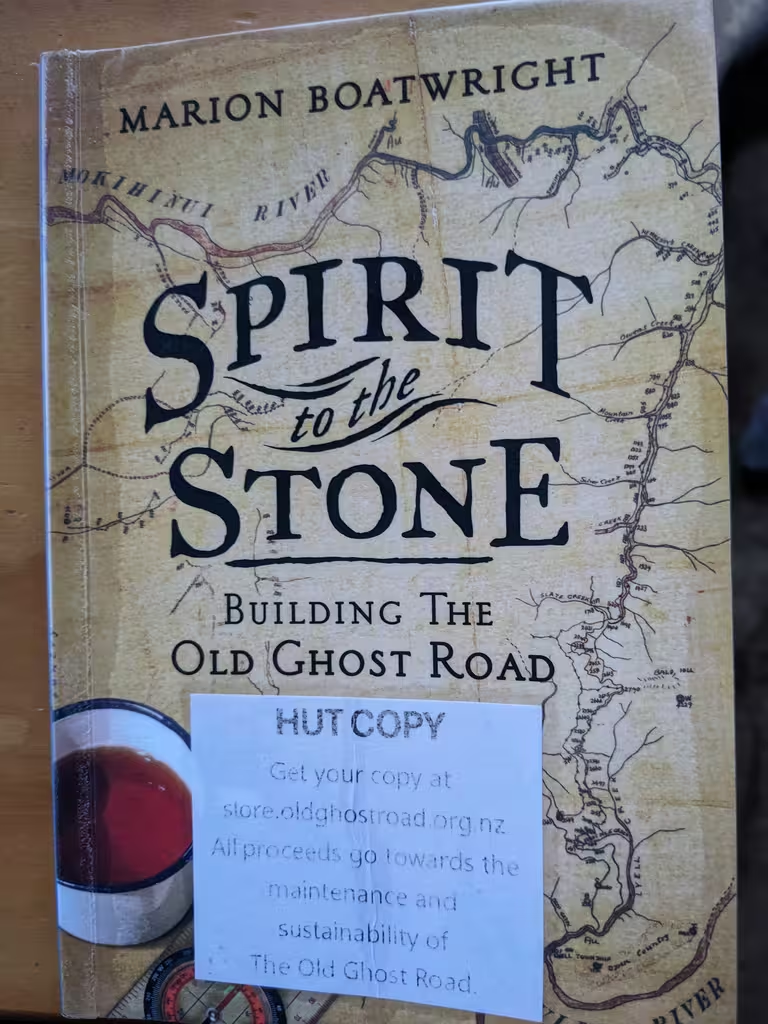Table Of Contents
The West Coast of New Zealand/Te Tai Poutini is a sparsely populated part of the South Island/Te Waipounamu (population 32,900). Historically, there was coal mining, but not so much these days (more about that later). Probably tourism is the most viable industry going forward. Punakaiki is busy with day-visitors to the Pancake Rocks, though it’ll never be Barcelona or Amsterdam. There is also dairying, though I would wonder about its viability in an era of climate change and needing to reduce greenhouse emissions.
Back in September 2021, we’d hiked the Paparoa Track, which is one of the Great Walks. Another walk that was on MP’s list was the Old Ghost Road, which is not a Great Walk, but is a 5 day walk equipped with (fancy, non-DOC) huts. We managed to walk the Old Ghost Road in July 2024. Both of these tracks have books describing various aspects of their construction.
There are two books. More about them later.
- Brendan O’Dwyer. The Last Front Line: Building the Paparoa Great Walk. 2020.
- Marion Boatwright. Spirit to the Stone: Building the Old Ghost Road. 2016. [store]
Both of our trips were on the edges of winter—Paparoa towards the end (technically spring), Old Ghost Road one month into winter. We had good weather for most of our walking, though Old Ghost Road had torrential downpours which we avoided by camping out in Specimen Point Hut for two nights. Our last day on the Paparoa was grey.
Comparing the Tracks
It’s about 100km by road from {Punakaiki, Blackball} to {Seddonville, Lyell}, except that somehow Seddonville to Lyell is 166km, go figure. Anyway, the tracks just aren’t that far away, especially compared to their lengths. Here are some statistics.
| Paparoa | Old Ghost Road | |
|---|---|---|
| Distance | 55.7km | 85km |
| Walking time | 3 days | 4-5 days |
| Max elevation | (sidetrip) Croseus Knob 1204m | 1280m |
| Open | 2020 | 2015 |
| Construction cost | $12M | $6.5M |
Clearly, Old Ghost Road is longer; however, I don’t really think it’s much harder; in particular, elevation gain is pretty moderate for both, with maybe 200m more elevation gain for Old Ghost Road based on a lower starting point. And you have to bring more food if you’re out for 5 days. Since they are both dual-use bicycle/walk trails, the trail is pretty tame and not that steep (for walking; still Grade 4 for biking). One difference, incidentally, is that ebikes are allowed on Old Ghost Road but currently not Paparoa.
It feels to me that there is more travel on the ridgetops on the Paparoa. There is definitely above-treeline travel on the Old Ghost Road, but my feeling and the topo suggest that we remain below the ridge tops. The Old Ghost Road does have stairs, though, while Paparoa doesn’t. (They are now building an alternate non-stair route that people with bikes might like more; probably less scenic). There are great views on the Old Ghost Road, but we were lucky to get the most excellent views through to the snow-capped Southern Alps from Paparoa. Looking through the pictures, we just barely saw snow from the Old Ghost Road.
Old Ghost Road: above treeline; more ridgelines and some snow visible; mist and reflections past Ghost Lake; sun and clouds; Union Point; windy and grey.
For the Paparoa, Old Ghost Road, and in fact the Heaphy as we did it, we started with a steady climb of 700-1000m on the first day. In the case of the Paparoa and the Old Ghost Road, we then stay on the tops for a bit before descending.
We also finished both of these tracks with a day (Paparoa) or two (Old Ghost Road) in a river valley: the Pororari for the Paparoa, and the Mohikinui for the Old Ghost Road. The Paparoa takes us right out to the coast, while the Old Ghost Road stops a few km inland, in Seddonville.
The huts on the Old Ghost Road are not run by DOC and they are better-equipped than even the Great Walks huts: they have gas cookers all year, as well as pots and pans and dishes. The Great Walks huts may have lighting though; I can’t remember.
Genesis story
Pretty different. The Old Ghost Road Wikipedia page has some details about that one, though the book has more. Basically, from Marion Boatwright’s point of view, he had an inn at the end of the trail and wanted something to link to it; meanwhile, a company was talking about building a hydroelectric dam flooding much of the potential trail.
The Paparoa was born out of the Pike River Mine disaster, which was shockingly recent for this kind of thing, happening in 2010. We should know better. I wrote a bit more about that disaster in my blog entry about On Cold Iron.
Specifically, the Old Ghost Road’s development was led by the community, as represented by the Lyell-Mohikinui Trust, which applied for grant funding and, at several points, crowdfunded to get over the line. Of course, they had to work with the Department of Conservation as the land manager, but DOC very much was not driving the digger.
The Paparoa, on the other hand, was led by DOC and executed by Westreef, a construction company. (They were also involved in building the Old Ghost Road). Presumably they had bigger money reserves backing them.
Comparing the Books
Both of the books are easy to read, but again, the focus is different. Although there is a fair amount of discussion of actual trackbuilding in the Boatwright book, it is really about the process of imagining the Old Ghost Road, finding where it could go, and fundraising for it. (And the obstacles!) The O’Dwyer book is from the perspective of a worker building the track for a number of years, a much more on-the-ground view of how the track gets built.



















